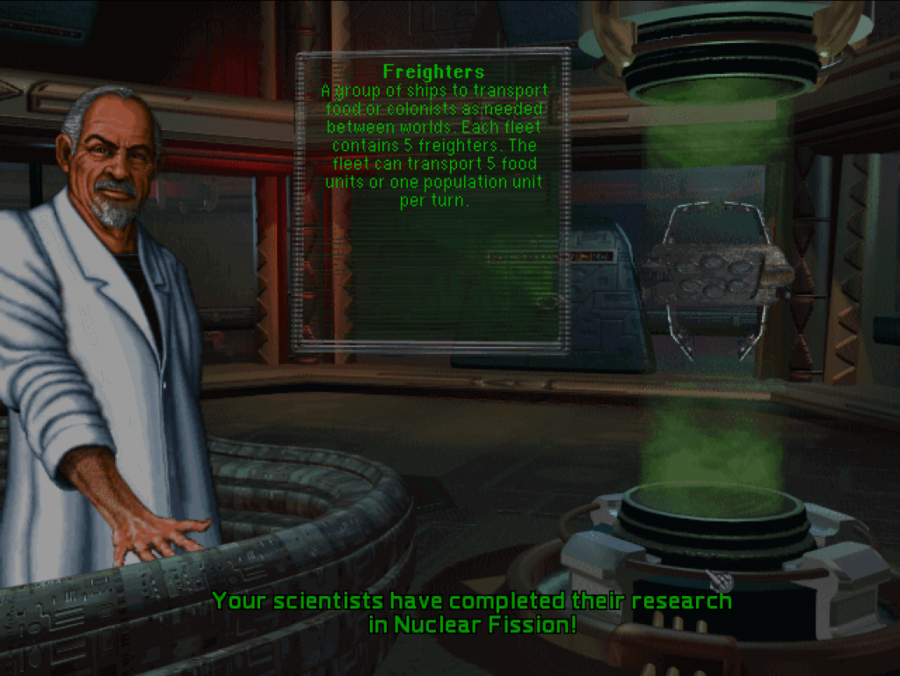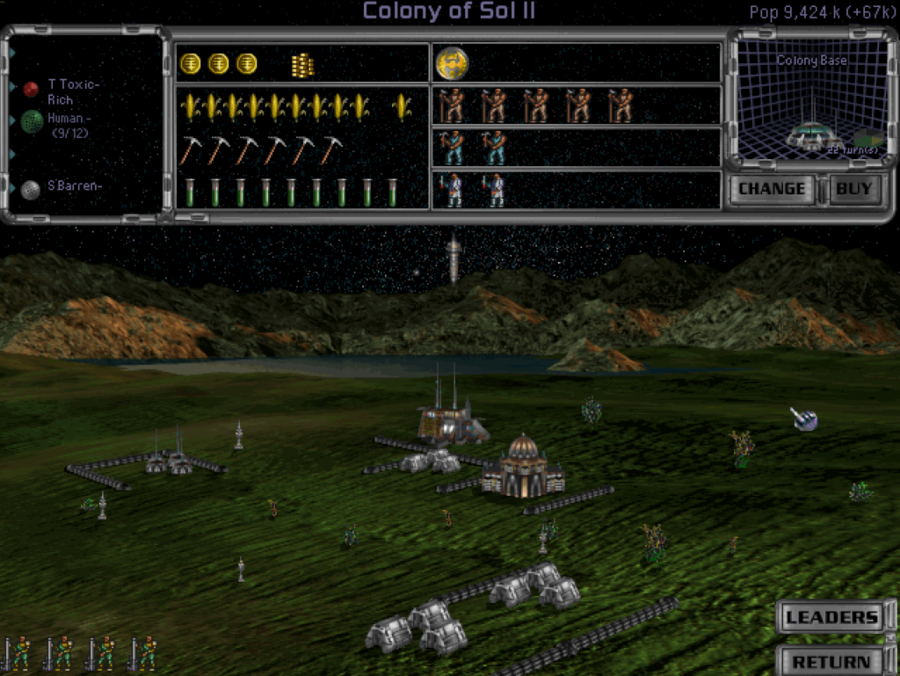Part 2: 2700-2720-Reaching to the Red Planet
Reaching to the Red PlanetThe mood on Earth following the unification is jubilant, and the Conservatives are swept back into power on a tide of appreciation for their pivotal role in the expansion of the United Republic. The heavy industries that had been focused on armaments during the last war are retooled, fabricating components for sealed colony structures, life support gear, mining equipment, and more, everything needed to establish a new colony on Mars.

Under these circumstances, the aerospace industry prospers and gets the resources it needs for refinement of round-trip space travel.
Nuclear Fission is one of the so-called 'general' research topics. All three applications under Nuclear Fission are researched simultaneously.

The 2705 elections pass with the Conservatives maintaining their mandate, and, in 2709, the final breakthroughs needed for bulk transport are perfected, and, within a year, a small fleet of commercial freighters begins the work of shipping the first colonists to Mars. Theoretical physicists have gathered observations that predict the existence of a parallel 'hyperspace' dimension that, if accessed, would allow FTL travel, but, as of yet, the materials science to build a ship that could actually survive a hyperspace jump does not exist.
Under normal circumstances, I would hold elections in the forum every five years, but given how early this is in the game and in the interests of letting people see some things happen in the first update, I am assuming the Conservatives maintain dominance for some time. Although we have researched the Nuclear Drive that permits the first ships, there is other technology we require before we can build ships.
Over the next ten years, the Conservatives maintain control of the Great Senate while the first Martian cities begin to take shape. The colony on Mars is far from self-sufficient, and more resources are spent in establishing the initial infrastructure than are actually acquired from the colony.
To be clear, we're still only building the colony base for Mars, so there is no actual colony there... yet.
Earth in 2720

Earth now has over nine billion people living on it, having passed that mark in 2714. The agricultural sector supports this growing population, with active heavy industry supporting the push to space and R&D departments working on the next breakthroughs for Humanity.
Let's talk a little about the colony screen. On the colony screen, we get to see representations of the improvements on a colony, as well as shuffle the population between agriculture, industry, and research, while seeing the current economic outputs of the colony. Earth has three improvements at the moment, which are all that can be built at our current technology. The Star Base is visible above the horizon, the Capitol's dome marks this as the center of our government, and there is a Marine Barracks providing ground defenders in the background. For each three billion inhabitants or fraction thereof, one unit of housing is pictured. For the fractional growth of population between 9 and 10 billion, we display four units of housing. The coins, corn, pickaxes, and test tubes indicate our output of money, food, industry, and science. We currently produce 13 BC in money on Earth from its population and our government type, with 3 BC used to support the Star Base (at 2 BC) and Marine Barracks (at 1 BC). The three coins to the left indicate our upkeep costs, while the stack of coins to the right indicates a 10 BC profit. Likewise, we are eating 9 units of food on Earth and produce 1 surplus. Six units of industry go towards our current production goal, and we are generating 9 units of research towards our research goal. We have four divisions of troops defending Earth, as can be seen in the bottom left. Not pictured, but able to be checked by clicking on the troop pictures, is that we also have a division of militia that will muster in defense of the colony if it is attacked. Militia do not fight as well as regular troops, but every little bit helps.

The pool of available investment capital has grown, and much of it has been set aside to fuel the push to Mars. The government, aerospace industry, and pools of prospective settlers and colonial investors all have vested interests in making the Mars colony a success. The program of commercial shipbuilding earlier means that any feasible Mars colony should be able to be supplied from Earth, no matter how large it grows.
The status bar on the right of the main map screen helps us monitor some of the important numbers for our own empire. From the top down, our current money and the surplus or deficit we run per turn. Below the money, our Command Points- a concept I will address later. Below Command Points, our total food surplus or deficit across the entire empire- if this goes negative, this means there is starvation somewhere, which is just terrible mismanagement. For every two units of food surplus we have, it will be converted into 1 BC in cash through the growth of cash crops and the like, but this is a generally inefficient way to earn money. Below the food report, our current pool of freighters and how many freighters we have free. If a colony does not grow enough food to feed itself, the food must be transported by freighter, using one freighter per unit of food. This happens automatically and invisibly, without need for us to manually manage food shipping schedules and without freighters appearing as visible things that can be interacted with on the map, so long as we have built enough freighters to support our shipping needs. Without enough freighters, as with without enough food, starvation occurs on the colonies deprived of food. Every two freighters in use costs 1 BC, which is a relatively minor expense but one that can make a difference if the budget is tight. Finally, below the freighter report, we are shown our total output of research per turn, the estimated time to the next breakthrough, and, if enough research has been accumulated, the percentage chance of a breakthrough next turn. This goes up as more RP are accumulated, eventually ensuring a breakthrough next turn when it reaches 100%, if it has not already occurred. If you decide to change research targets, all accumulated RP are seamlessly transferred to the new research target without waste (except in the possible case when the new target is much cheaper than the old target and you've already accumulated more than enough RP for a 100% chance of breakthrough).
The 2720 elections are approaching, with many younger voters who were only children when Earth was unified, and the three parties offer their platforms.
The Conservatives intend to ensure that the Mars colony succeeds, while continuing to support the shipbuilding concerns and sponsor the development of new industrial infrastructure before focusing on a crash program for FTL exploration. With new industrial development, the Republic will be in a stronger position to exploit space in the future.
The Social Democrats think that the Mars colony should be completed, but that the government should refocus on the program of housing development, birth incentives, and medical work it initially proposed, both on Earth and on Mars, once the colony is up and running.
The Liberals agree with both other parties that the Mars colony is a thing that can and should happen, but believe that once it is in place the program of industrial subsidies currently in place should be tapered off. There is still a great deal of commercial demand for a more efficient tech sector, and the Liberals believe that the bolstered research offered by the technologies the computer sector has been working on could lay the groundwork for a great improvement in the economic output of both Earth and Mars.